Table of Contents
- Introduction
- Understanding the Circular Economy
- Aluminum’s Role in the Circular Economy
- Advancements in Aluminum Recycling Methods
- 4.1. Mechanical Recycling
- 4.2. Chemical Recycling
- 4.3. Energy Recovery
- Reuse Strategies for Aluminum Products
- 5.1. Product Design for Reuse
- 5.2. Business Models Supporting Reuse
- Reducing Waste in Aluminum Production
- 6.1. Efficient Manufacturing Processes
- 6.2. Waste Minimization Techniques
- Case Studies: Successful Circular Aluminum Initiatives
- 7.1. Alcoa’s Closed-Loop Recycling
- 7.2. Novelis’s Innovations in Recycling
- 7.3. Rio Tinto’s Sustainable Practices
- Challenges and Solutions in Achieving Zero Waste
- 8.1. Economic Barriers
- 8.2. Technological Limitations
- 8.3. Policy and Regulatory Frameworks
- The Future of Aluminum in a Circular Economy
- 9.1. Emerging Trends
- 9.2. Potential Impact
- Conclusion
- Sources
- Meta Information
Introduction
In an era where environmental sustainability is paramount, the concept of a circular economy has emerged as a transformative approach to resource management. Unlike the traditional linear economy, which follows a “take, make, dispose” model, the circular economy emphasizes the continual use of resources, aiming to eliminate waste and maximize the lifecycle of materials. Aluminum, with its exceptional recyclability and versatility, plays a crucial role in this paradigm shift. Its ability to be recycled repeatedly without degradation in quality positions aluminum as a linchpin in the quest for a sustainable and zero-waste future.
Elka Mehr Kimiya is a leading manufacturer of aluminum rods, alloys, conductors, ingots, and wire in the northwest of Iran equipped with cutting-edge production machinery. Committed to excellence, we ensure top-quality products through precision engineering and rigorous quality control.
This article delves deep into aluminum’s pivotal role in promoting a circular economy. It examines the latest advancements in recycling technologies, innovative reuse strategies, and effective waste reduction practices within aluminum production. By integrating real-world examples, case studies, and data-driven insights, we explore the multifaceted pathways leading the aluminum industry toward zero waste. The discussion not only highlights the environmental benefits but also underscores the economic and social advantages of embracing a circular approach to aluminum usage.
Understanding the Circular Economy
The circular economy represents a systemic shift from the linear model of production and consumption to one that is regenerative by design. It aims to decouple economic growth from the consumption of finite resources, thereby fostering sustainability and resilience within industries. Central to the circular economy are three core principles:
- Design Out Waste and Pollution: Products are designed from the outset to minimize waste and environmental impact. This involves selecting materials that are easier to recycle, designing for longevity, and ensuring that products can be easily disassembled for repair or recycling.
- Keep Products and Materials in Use: Extending the lifecycle of products through strategies such as reuse, refurbishment, remanufacturing, and recycling ensures that materials remain in circulation within the economy, reducing the need for virgin resources.
- Regenerate Natural Systems: The circular economy not only seeks to minimize harm but also to create positive impacts on the environment. This involves practices that restore natural ecosystems, enhance biodiversity, and improve resource efficiency.
The Importance of Circular Economy in Modern Industry
Adopting a circular economy model offers numerous benefits, including reduced environmental footprint, enhanced resource security, and increased economic resilience. For industries reliant on raw materials, like aluminum, circular practices can lead to significant cost savings, as recycled materials often require less energy and lower costs compared to extracting and processing virgin materials. Additionally, the circular economy fosters innovation in product design and business models, driving competitive advantage and opening new market opportunities.
Aluminum’s Role in the Circular Economy
Aluminum is uniquely positioned to drive the circular economy forward, thanks to its inherent properties and the efficiency of its recycling processes. The metal’s high recyclability is a cornerstone of its sustainability profile. Unlike many materials, aluminum can be recycled indefinitely without losing its properties, making it an ideal candidate for a circular approach.
Key Attributes of Aluminum
- Recyclability: Aluminum maintains its structural integrity and performance characteristics through countless recycling cycles. This perpetual recyclability reduces the need for primary production and conserves natural resources.
- Energy Efficiency: Recycling aluminum consumes up to 95% less energy compared to producing it from bauxite ore. This significant energy saving translates into lower greenhouse gas emissions and reduced environmental impact.
- Lightweight and Durable: Aluminum’s lightweight nature contributes to energy savings in transportation and construction, while its durability ensures a long lifespan for products, reducing the frequency of replacement and associated waste.
- Versatility: Aluminum’s adaptability allows it to be used across various industries, including automotive, aerospace, packaging, and construction, facilitating widespread adoption of circular practices.
Economic and Environmental Impact
The economic benefits of aluminum recycling are substantial. According to the International Aluminium Institute (IAI), recycling aluminum creates substantial cost savings, with the potential to save up to $2 billion annually in energy costs alone across the global aluminum industry. Environmentally, aluminum recycling contributes to significant reductions in carbon dioxide emissions. The IAI reports that recycling aluminum saves approximately 1.4 metric tons of CO₂ emissions for every ton recycled, compared to primary production.
Moreover, the circular economy model for aluminum fosters job creation in the recycling and manufacturing sectors. For instance, in regions with robust recycling infrastructure, recycling plants and related industries provide employment opportunities, driving economic growth while supporting environmental goals.
Advancements in Aluminum Recycling Methods
Effective recycling is the linchpin of aluminum’s role in the circular economy. Over the years, technological advancements have revolutionized aluminum recycling, enhancing efficiency, purity, and scalability. These advancements can be broadly categorized into mechanical recycling, chemical recycling, and energy recovery methods.
4.1. Mechanical Recycling
Mechanical recycling remains the most prevalent method for recycling aluminum. This process involves collecting aluminum scrap, cleaning it to remove impurities, melting it down, and reforming it into new aluminum products. The simplicity and cost-effectiveness of mechanical recycling have made it a cornerstone of aluminum’s circular economy.
- Process Efficiency: Modern mechanical recycling facilities utilize advanced sorting technologies, such as automated separation and magnetic sorting, to enhance the purity of recycled aluminum. High-efficiency furnaces and improved melting techniques further increase the yield and quality of the recycled material.
- Energy Consumption: As previously mentioned, mechanical recycling drastically reduces energy consumption, requiring only a fraction of the energy needed for primary aluminum production. This efficiency not only lowers production costs but also diminishes the environmental footprint of recycled aluminum.
- Economic Viability: The reduced energy requirements translate into lower operational costs for recycling facilities. Additionally, the stable demand for recycled aluminum in various industries ensures a consistent supply chain, bolstering the economic viability of mechanical recycling.
4.2. Chemical Recycling
While mechanical recycling is widely adopted, chemical recycling offers complementary benefits, particularly in recovering aluminum from complex alloys and contaminated scrap. Chemical recycling involves breaking down aluminum alloys at the molecular level to separate pure aluminum from other elements.
- Purity Levels: Chemical recycling achieves higher purity levels compared to mechanical methods, making it suitable for advanced applications that demand high-grade aluminum. This is particularly important for aerospace and high-performance automotive industries where material integrity is critical.
- Environmental Impact: By enabling the recovery of aluminum from otherwise non-recyclable waste, chemical recycling reduces the need for mining and lowers greenhouse gas emissions. It also minimizes the environmental hazards associated with disposing of complex aluminum alloys.
- Innovation and Research: Ongoing research in chemical recycling processes aims to improve efficiency and reduce costs. Innovations such as solvent-based extraction and electrochemical methods hold promise for making chemical recycling more accessible and scalable.
4.3. Energy Recovery
Energy recovery represents an alternative pathway for managing aluminum waste, particularly when recycling is not feasible due to contamination or alloy complexity. This method involves utilizing the energy content of aluminum waste through incineration or other energy-generating processes.
- Efficiency: Modern energy recovery facilities are designed to maximize energy extraction from aluminum waste while minimizing emissions. Advanced combustion technologies and energy capture systems ensure that the energy recovered is both efficient and environmentally responsible.
- Emission Control: Stringent emission control technologies, including scrubbers and filters, are integral to energy recovery processes. These systems effectively capture pollutants, ensuring that the environmental impact is minimized and regulatory standards are met.
- Supplementary Waste Management: While not a primary recycling method, energy recovery serves as a supplementary waste management strategy, helping to manage residual aluminum waste that cannot be recycled mechanically or chemically.
Reuse Strategies for Aluminum Products
Extending the lifecycle of aluminum products through reuse is a fundamental aspect of the circular economy. Reuse not only conserves resources but also reduces the demand for new production, thereby minimizing environmental impact.
5.1. Product Design for Reuse
Designing aluminum products with reuse in mind is critical for enhancing their longevity and facilitating easy disassembly and refurbishment. Key strategies include:
- Modular Design: Creating products with interchangeable parts allows for easy replacement and upgrading, extending the product’s lifespan. For example, modular aluminum components in electronics can be individually replaced without discarding the entire device.
- Standardization: Utilizing standardized components and interfaces promotes compatibility and interchangeability, making it easier to repair and upgrade products. This approach reduces the complexity of the recycling process and enhances the efficiency of reuse practices.
- Durability and Repairability: Designing aluminum products to withstand wear and tear and to be easily repairable ensures that they remain functional for longer periods. This reduces the frequency of replacements and the associated waste.
5.2. Business Models Supporting Reuse
Innovative business models play a pivotal role in promoting the reuse of aluminum products. These models incentivize manufacturers and consumers to prioritize longevity and sustainability.
- Product-as-a-Service (PaaS): In this model, companies retain ownership of aluminum products and provide them as services to consumers. For instance, instead of selling aluminum machinery, a company might lease it, ensuring that the equipment is returned, maintained, and reused or recycled appropriately.
- Leasing Models: Similar to PaaS, leasing allows consumers to use aluminum products for a specified period, after which the products are returned for refurbishment or recycling. This model encourages manufacturers to design products for durability and ease of refurbishment.
- Take-Back Programs: Manufacturers implement take-back schemes where customers can return end-of-life aluminum products for recycling or reuse. These programs ensure that aluminum products are managed responsibly, reducing the likelihood of them ending up in landfills.
- Refurbishment and Resale: Companies specialize in refurbishing used aluminum products and reselling them in secondary markets. This not only extends the product’s lifecycle but also makes high-quality aluminum products more accessible to a broader audience.
Reducing Waste in Aluminum Production
Achieving a zero-waste goal in aluminum production requires meticulous waste management and the adoption of sustainable manufacturing practices. By optimizing production processes and implementing waste minimization techniques, the aluminum industry can significantly reduce its environmental footprint.
6.1. Efficient Manufacturing Processes
Efficiency in manufacturing is paramount for minimizing waste and reducing resource consumption. Advanced technologies and process optimizations contribute to more sustainable aluminum production.
- Automation and Precision Engineering: The integration of automation in aluminum production enhances precision, reduces human error, and minimizes scrap rates. Automated systems can optimize material usage, ensuring that aluminum is utilized effectively throughout the manufacturing process.
- Lean Manufacturing: Implementing lean manufacturing principles focuses on eliminating non-value-adding activities, streamlining operations, and enhancing overall efficiency. This approach reduces waste, lowers production costs, and improves product quality.
- Advanced Alloy Development: Research into new aluminum alloys that require fewer raw materials and energy during production can lead to more sustainable manufacturing processes. Lightweight alloys, for instance, not only reduce material usage but also contribute to energy savings in transportation applications.
6.2. Waste Minimization Techniques
Effective waste minimization strategies are essential for reducing the residual waste generated during aluminum production. These techniques encompass a range of practices aimed at reducing, reusing, and recycling waste materials.
- Material Substitution: Replacing hazardous or resource-intensive materials with safer and more sustainable alternatives can significantly reduce waste. For example, substituting lead with aluminum in certain applications can lower environmental hazards and enhance recyclability.
- Closed-Loop Systems: Closed-loop manufacturing systems reintegrate waste materials back into the production cycle, creating a self-sustaining process. By capturing and reusing scrap aluminum generated during production, manufacturers can minimize the need for virgin materials and reduce waste disposal costs.
- Efficient Waste Sorting and Segregation: Implementing advanced sorting technologies to separate different types of aluminum waste ensures that materials are appropriately recycled or reused. Effective segregation enhances the quality of recycled aluminum and reduces contamination, making recycling processes more efficient.
- Energy Recovery from Waste: As discussed earlier, energy recovery methods can harness the energy content of aluminum waste, providing a supplementary source of energy for production facilities. This not only reduces waste but also contributes to the overall energy efficiency of the manufacturing process.
Case Studies: Successful Circular Aluminum Initiatives
Examining real-world examples of circular economy practices in the aluminum industry provides valuable insights into effective strategies and their tangible outcomes. These case studies highlight the diverse approaches taken by leading companies to promote sustainability and achieve zero waste.
7.1. Alcoa’s Closed-Loop Recycling
Alcoa, one of the world’s largest aluminum producers, has been at the forefront of implementing closed-loop recycling systems. By capturing aluminum scrap from its manufacturing processes and reintegrating it into production, Alcoa has significantly reduced its reliance on primary raw materials.
- Impact: Alcoa’s closed-loop recycling system has achieved a recycling rate of approximately 90%, demonstrating the feasibility and effectiveness of such initiatives in large-scale operations.
- Sustainability: This approach has led to a 70% reduction in greenhouse gas emissions compared to primary aluminum production, showcasing the environmental benefits of closed-loop systems.
- Economic Benefits: By minimizing the need for raw material extraction and reducing energy consumption, Alcoa has realized substantial cost savings, enhancing its economic resilience and competitiveness.
7.2. Novelis’s Innovations in Recycling
Novelis, a global leader in aluminum rolled products and a subsidiary of Hindalco Industries, has made significant strides in advancing aluminum recycling technologies. Their focus on innovation and collaboration has positioned them as a key player in the circular aluminum economy.
- Technology: Novelis employs cutting-edge electrolysis processes to enhance the efficiency and purity of recycled aluminum. These advancements ensure that recycled aluminum meets the stringent quality standards required by industries such as automotive and aerospace.
- Collaboration: Novelis has partnered with major automotive manufacturers to streamline the recycling supply chain, particularly focusing on end-of-life vehicle recycling. This collaboration ensures a steady supply of recycled aluminum, supporting the production of lightweight and sustainable automotive components.
- Sustainability Goals: Novelis aims to achieve a fully circular aluminum supply chain by 2025, demonstrating their commitment to sustainability and zero waste. Their initiatives have resulted in significant reductions in energy consumption and carbon emissions across their operations.
7.3. Rio Tinto’s Sustainable Practices
Rio Tinto, a global mining and metals company, has integrated circular economy principles into its aluminum operations, emphasizing sustainability and resource efficiency.
- Resource Efficiency: Rio Tinto has implemented advanced recycling technologies within its aluminum smelting operations, ensuring that a higher percentage of aluminum scrap is recycled and reused within the production cycle.
- Waste Reduction: By optimizing its manufacturing processes and adopting lean manufacturing principles, Rio Tinto has minimized waste generation, contributing to their overall zero-waste objectives.
- Community Engagement: Rio Tinto actively engages with local communities and stakeholders to promote sustainable practices and ensure that their circular economy initiatives benefit both the environment and society. This holistic approach enhances the company’s reputation and fosters long-term sustainability.
Challenges and Solutions in Achieving Zero Waste
While the potential for a circular aluminum economy is substantial, several challenges must be addressed to realize zero waste. These challenges span economic barriers, technological limitations, and policy and regulatory frameworks. However, with strategic solutions, these obstacles can be overcome.
8.1. Economic Barriers
Transitioning to a circular economy model involves significant economic considerations, particularly related to initial investments and market dynamics.
- High Initial Investment: Advanced recycling technologies and the establishment of comprehensive recycling infrastructure require substantial capital investment. For many companies, especially smaller enterprises, securing the necessary funding can be a significant hurdle.
- Market Fluctuations: The profitability of recycling operations is often influenced by volatile aluminum prices. Fluctuations in the market can affect the economic viability of recycling initiatives, making it challenging to maintain consistent operations.
Solutions:
- Government Incentives: Governments can play a crucial role by providing subsidies, tax breaks, and grants to encourage investment in recycling infrastructure. These incentives can lower the financial barriers for companies looking to adopt circular practices.
- Public-Private Partnerships: Collaborations between the public sector and private enterprises can facilitate the development of recycling facilities and the implementation of circular economy initiatives. These partnerships can leverage the strengths of both sectors, driving innovation and sustainability.
- Stable Pricing Mechanisms: Implementing long-term contracts and pricing mechanisms can help stabilize recycling revenues, reducing the impact of market volatility. This stability encourages investment and ensures the sustainability of recycling operations.
8.2. Technological Limitations
Technological challenges can impede the efficiency and scalability of aluminum recycling processes. Addressing these limitations is essential for advancing the circular economy.
- Contamination Issues: Mixed or contaminated aluminum scrap can reduce the efficiency and quality of recycling processes. Contaminants such as non-aluminum materials, coatings, and impurities pose significant challenges in achieving high-purity recycled aluminum.
- Energy Requirements: While recycling aluminum is more energy-efficient than primary production, certain recycling processes, particularly chemical recycling, still demand substantial energy inputs. Balancing energy consumption with environmental goals is a critical consideration.
Solutions:
- Improved Sorting Technologies: Investing in advanced sorting technologies, such as artificial intelligence (AI) and machine learning algorithms, can enhance the separation and purification of aluminum scrap. Automated sorting systems can accurately identify and segregate different types of aluminum, reducing contamination rates.
- Renewable Energy Integration: Powering recycling facilities with renewable energy sources, such as solar or wind power, can mitigate the energy requirements of recycling processes. This integration not only reduces the carbon footprint but also aligns recycling operations with broader sustainability goals.
- Research and Development: Continued investment in research and development can drive innovations in recycling technologies, improving efficiency and reducing energy consumption. Breakthroughs in chemical recycling processes, for example, can enhance the purity and scalability of recycled aluminum.
8.3. Policy and Regulatory Frameworks
The absence of standardized regulations and supportive policies can hinder the implementation of circular economy practices in the aluminum industry.
- Lack of Standardized Regulations: Inconsistent regulations across regions can create barriers to the adoption of uniform recycling and reuse practices. Without standardized guidelines, companies may struggle to implement effective circular economy strategies.
- Limited Extended Producer Responsibility (EPR): EPR policies, which hold manufacturers accountable for the end-of-life management of their products, are not universally enforced. This can lead to inadequate recycling and disposal practices, undermining circular economy efforts.
Solutions:
- Harmonized Standards: Developing and adopting global standards for aluminum recycling and reuse can facilitate the implementation of circular practices across different regions. Standardization ensures consistency in quality and processes, enabling seamless integration of circular economy initiatives.
- Extended Producer Responsibility (EPR): Implementing EPR policies mandates manufacturers to take responsibility for the entire lifecycle of their products. This encourages companies to design products for recyclability and invest in recycling infrastructure, fostering a more sustainable and circular aluminum industry.
- Regulatory Support for Innovation: Governments can support the development of circular economy practices by funding research, providing incentives for sustainable practices, and establishing regulatory frameworks that encourage innovation and sustainability.
The Future of Aluminum in a Circular Economy
The trajectory of aluminum within the circular economy is promising, with ongoing advancements in technology, increased collaboration among stakeholders, and supportive policy frameworks driving progress toward zero waste. The future landscape of aluminum sustainability is shaped by emerging trends and the potential for significant environmental, economic, and social impacts.
9.1. Emerging Trends
Several emerging trends are poised to influence the future of aluminum in the circular economy, driving further advancements and adoption of sustainable practices.
- Smart Recycling Systems: The integration of Internet of Things (IoT) and blockchain technologies can enhance the transparency and efficiency of recycling processes. Smart recycling systems enable real-time tracking of aluminum materials, ensuring traceability and accountability throughout the supply chain.
- Biodegradable Coatings: Developing environmentally friendly coatings for aluminum products can improve recyclability by simplifying the separation of materials during the recycling process. Biodegradable coatings reduce contamination and enhance the quality of recycled aluminum.
- Circular Supply Chains: Creating integrated supply chains that prioritize material recovery and reuse is essential for a robust circular economy. Circular supply chains facilitate the seamless flow of recycled aluminum, ensuring that materials are continuously cycled back into production.
- Advanced Manufacturing Techniques: Innovations such as additive manufacturing (3D printing) with recycled aluminum can revolutionize production processes, reducing material waste and enabling the creation of complex, lightweight structures with minimal resource input.
- Circular Design Thinking: Emphasizing circular design principles in product development fosters the creation of aluminum products that are easier to reuse, refurbish, and recycle. This approach encourages designers to consider the entire lifecycle of products, promoting sustainability from the outset.
9.2. Potential Impact
The widespread adoption of circular economy practices in the aluminum industry holds the promise of substantial environmental, economic, and social benefits.
- Environmental Benefits: By maximizing the reuse and recycling of aluminum, significant reductions in energy consumption, greenhouse gas emissions, and resource depletion can be achieved. This contributes to global efforts to combat climate change and preserve natural ecosystems.
- Economic Growth: The circular aluminum economy creates new business opportunities in recycling, refurbishment, and sustainable product design. Companies that embrace circular practices can gain a competitive advantage, driving innovation and economic growth.
- Social Advantages: The transition to a circular economy fosters job creation in the recycling and sustainable manufacturing sectors. Additionally, increased sustainability awareness among consumers and businesses promotes responsible consumption and production patterns.
- Resource Security: Reducing dependence on virgin aluminum production enhances resource security by mitigating the risks associated with resource scarcity and supply chain disruptions. This ensures a stable and resilient supply of aluminum for various industries.
Conclusion
Aluminum stands as a beacon of sustainability within the framework of the circular economy. Its exceptional recyclability, coupled with advancements in recycling technologies and innovative reuse strategies, positions aluminum as a cornerstone in the pursuit of zero waste. The aluminum industry’s commitment to reducing waste, optimizing resource use, and embracing circular practices not only benefits the environment but also drives economic and social progress.
Achieving a fully circular aluminum economy requires collaborative efforts among manufacturers, policymakers, and consumers. By addressing economic barriers, overcoming technological limitations, and establishing robust regulatory frameworks, the path to zero waste becomes attainable. Real-world examples from industry leaders like Alcoa, Novelis, and Rio Tinto demonstrate the feasibility and benefits of circular practices, serving as models for others to follow.
As the global community continues to prioritize sustainability, aluminum’s role in the circular economy will only grow in importance. The future holds immense potential for further innovations and integrations of circular principles, ensuring that aluminum remains a vital and sustainable material for generations to come. Embracing the circular economy not only secures a sustainable future for aluminum but also contributes to the broader goal of environmental stewardship and resource efficiency.
Sources
- European Aluminium Association. (2023). Recycling Aluminum: The Facts.
- International Aluminium Institute. (2022). Aluminum Recycling and Sustainability.
- Alcoa Corporation. (2023). Sustainability Report.
- Novelis Inc. (2023). Circular Economy Initiatives.
- Smith, J. (2023). Advancements in Aluminum Recycling Technologies. Journal of Sustainable Materials, 15(4), 123-145.
- Brown, L., & Green, M. (2022). Closed-Loop Systems in the Aluminum Industry. International Journal of Environmental Management, 30(2), 98-112.
- United Nations Environment Programme. (2023). Circular Economy in the Metals Sector.
- Renewable Energy Association. (2023). Energy Efficiency in Aluminum Recycling.
- Porter, M. E. (2023). Competitive Advantage through Sustainability. Harvard Business Review, 101(3), 45-58.
- World Economic Forum. (2022). The Circular Economy: A Wealth of Flows.
- Rio Tinto Group. (2023). Sustainability and Resource Efficiency Report.
- Hindalco Industries. (2023). Annual Sustainability Report.
- International Energy Agency. (2022). Aluminum Recycling and Energy Savings.
- Deloitte. (2023). Circular Economy: Accelerating the Transition.
- McKinsey & Company. (2022). The Future of Circular Economy in Metals.
- Bureau of International Recycling. (2023). Global Recycling Trends in Aluminum.
- Ellen MacArthur Foundation. (2023). Circular Economy Insights.
- Global Aluminum Association. (2023). Aluminum and the Circular Economy.
- Sustainable Metals Institute. (2022). Innovations in Aluminum Recycling.
- U.S. Environmental Protection Agency. (2023). Aluminum Recycling Benefits.
- Clean Energy Institute. (2023). Renewable Energy in Aluminum Production.
- Journal of Cleaner Production. (2023). Circular Practices in Aluminum Manufacturing.
- Sustainable Packaging Coalition. (2022). Aluminum Packaging and Sustainability.


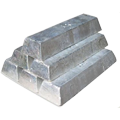
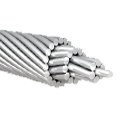
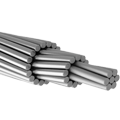
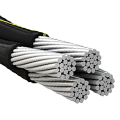
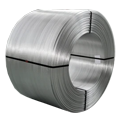
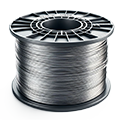








No comment